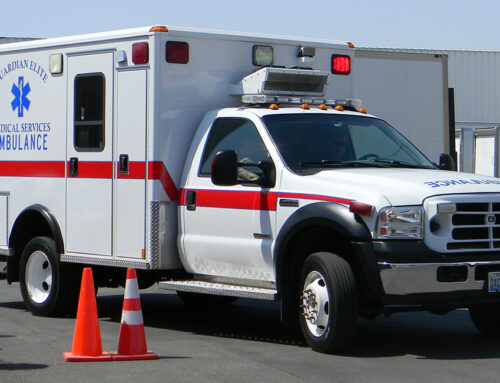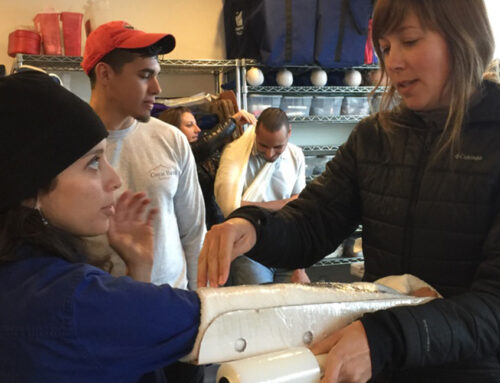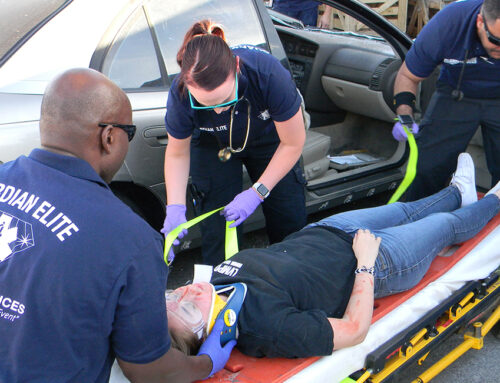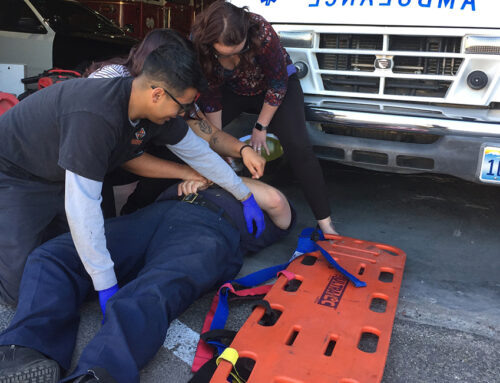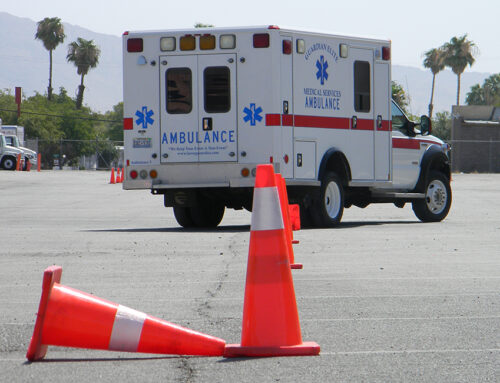Project Description
Click Here For Course Schedule
Wilderness First Aid
Cost: $200.00
Wilderness First Aid is a 20 hour course that teaches the lay rescuer how to respond to medical and trauma emergencies in the wilderness environment. This course is designed for people with no medical experience, however basic first aid and CPR/AED is highly recommended. The first day of the course is spent in the classroom where the students will learn about the individual skills and the didactic knowledge needed to pass the second day. The second day is spent in the wilderness responding to simulated medical and trauma emergencies. Students will use their knowledge gained in the first day and apply on the second day. The scenarios on the second day are a mix of medical and trauma emergencies. At the conclusion of the course the student will take a final exam and receive a certification card that is good for two years from the American Safety and Health Institute. Included in the cost of the course is a course manual, all the training materials, and certification card.
Course Outline
- Section 1. Preparation and Assessment
- Training for Wilderness Emergencies .
- Patient Assessment: Learning to Find Problems.
- Skill Guide 1 — Initial Assessment: Unresponsive
- Skill Guide 1 — Initial Assessment: Responsive .
- Skill Guide 2 — Physical Exam .
- Skill Guide 3 — Vital Signs .
- Skill Guide 4 — SAMPLE History .
- Skill Guide 5 — SOAP Table Section
- Section 2. Preventing and Caring for Injuries
- Shock .
- Skill Guide 6 — Shock Managemen
- Wilderness Wound Care .
- Skill Guide 7 — Control of Bleeding.
- Burns.
- Skill Guide 8 — Burn Care
- Bone Injuries and Splinting
- Skill Guide 9 — Assessing and Splinting Fractures
- Joint Injuries
- Skill Guide 10 — Unstable Ankle
- Head and Spinal Injuries
- Skill Guide 11 — Assessing and Treating Head Injuries
- Skill Guide 12 — Assessing Spinal Injuries
- Skill Guide 13 — Single Rescuer Log-Roll
- Skill Guide 14 — Multiple Rescuer Log-Roll
- Skill Guide 15 — Straightening the Pretzel
- Skill Guide 16 — BEAM Move
- Eye and Facial Injuries
- Chest and Abdominal Injuries
- Skill Guide 18 — Assessing Chest and Abdominal Injuries
- Shock .
- Section 3. Environmental Hazards
- How to Beat the Heat
- Hypothermia
- Skill Guide 19 — Assessing and Treating Hypothermia
- Frostbite
- Submersion Incidents (Drowning)
- Altitude Illness
- Lightning Strike
- Sunburn, Skin and Eye Protection
- Section 4. Biological Hazards
- Contaminated Water
- Mosquitoes, Ticks and Disease
- Bees, Wasps, and Spiders
- Skill Guide 20 — Using an Epinephrine Auto-Injector: To use an EpiPen® epinephrine auto-injector .Skill Guide 20 — Using an Epinephrine Auto-Injector: To use a TwinJect® epinephrine auto-injector
- Venomous Snakes
- Hazardous Mammals
- Hazardous Marine Animals
- Hazardous Plants
- Section 5. Medical Problems in the Wilderness
- Skill Guide 21 — Assessing Medical Emergencies
- Section 6. Additional Information
- Wilderness First Aid Kits
- Resources
Frequently Asked Questions
Can I take this course if I do not have any medical experience?
Absolutely! This course is designed for individuals who have no medical training, although we highly recommend that you take a basic first aid course and a CPR/AED course prior to attending.
I am an EMT, Paramedic, Nurse, Physician, etc. Will this class be boring?
We do not believe so. This course will serve as a review to your already established base knowledge and will build upon that. In addition, Wilderness First Aid will teach you how to think differently in an austere environment. We will also use your expertise during the class to lead those that do not have as much experience.
How strenuous is the field (second) day?
The second day is pretty strenuous. It is not recommended for those with preexisting medical conditions or those who have trouble at altitude. If you have any questions if you should take this course then consult your physician.
What will the second day be like?
The second day will be tough. You will be expected to hike in an austere environment. You will need to pack in all your own personal supplies and be self sufficient for a day. You will need plenty of water and food. In addition you will be carrying simulated injured individuals as a group. If you are having any issues during the course or if you do not think you can handle the course then please speak with one of our training staff.

